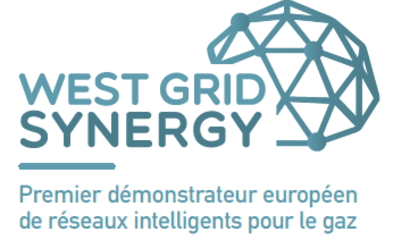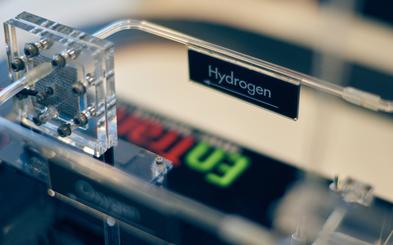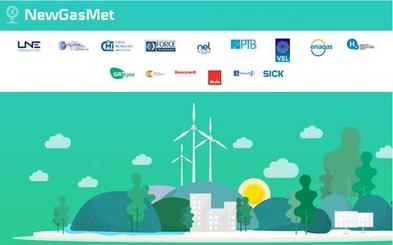INNOVATIVE PROJECTS PLATFORM
ENTSOG and its Members (TSOs) invites you to a new interactive platform called Innovative Projects Platform. To efficiently build on its Members efforts to promote or contribute to innovative technologies, regulation and business models, and partnerships across the value chain, ENTSOG have initiated the identification process to map TSOs’ partnerships on Research, Development and Innovation (RDI) activities.
The result is the creation of a public platform for communication and exchange of best practices applied at national level.
These innovative solutions focus on biogas, power to gas, hydrogen, CNG and other innovative applications to support the achievement of the current EU goals of reducing GHG emissions.
*Disclaimer: The content published on this page is information owned by TSOs and not by ENTSOG. It is therefore published on behalf of TSOs. Please note terms and conditions of use of the website (including article 7) are fully applicable to this page.
Technology
Discover here how technologies can optimise the usage of the grid, make digital layer connections and support decarbonisation of the EU gas system. Technology R&D has a vital role in the energy transition. ENTSOG Members (TSOs) are developing new and innovative technologies to offer sustainable solutions for the gas sector.
Regulation & business model
Stay informed on how ENTSOG Members (TSOs) engage in development of the new energy products and services to foster uptake of renewable and decarbonised gases into the grid.
Partnership
Look at new partnerships and initiatives formed by ENTSOG’s Members (TSOs). They are actively working together as well as with various stakeholders on projects aimed at decarbonisation of the gas sector and of the whole EU economy.
Hydrogen
Hydrogen can be produced from diverse process technologies. Hydrogen can be produced via steam methane reforming and blended with natural gas to be transported via existing grid infrastructure and contribute towards decarbonisation.
Innovation & Transition
Technological innovation is important for the transition to low carbon economy and combating climate change. New technologies such as power-to gas, biomethane, hydrogen, CNG will enable this transition.
Biogas
Biogas is obtained via the anaerobic decomposition of the organic matter. After the process of upgrading, biogas becomes biomethane with the same quality standard as natural gas and can be transported via the existing grid infrastructure.
CCS
Carbon Capture and storage is the process of capturing waste CO2 from large point sources, such as fossil fuel power plants, transporting it to a storage site, and depositing it where it will not enter the atmosphere. The aim is to prevent the release of large quantities of CO2 into the atmosphere.
Power to gas
Power-to-gas is the conversion of electrical power into a gaseous energy carrier like e.g. hydrogen or methane. This technological concept is considered to be an important tool in the energy transition.
CNG
Compressed Natural Gas (CNG) is a fuel source that is made from compressing natural gas to less than 1% of its standard atmospheric volume. CNG combustion produces fewer undesirable gases than other fossil fuels.
Digitalisation
Digitalisation can bring various benefits to day-to-day operations such as enhanced control over the gas quality and cost reductions. TSOs look at data-driven solutions to boost performance, efficiency and competitiveness.
Heating & Cooling
Cutting the energy consumption in heating and cooling in buildings and industry can be achieved through various technologies. TSOs are working on developing cost-efficient solutions for the decarbonisation of this sector.
Certification of green gases
To ensure the cross-border scale up and tradability of renewable, decarbonised and low-carbon gases. This can be achieved via pan European Guarantees of Origin and Certification Schemes.
OGE
CO2 transportation grid
The transportation grid consists of the CO2 starter grid and expansion routes. With a length of 964 km, the planned CO2 starter grid is set to transport 18.8 million tons of CO2 in future. Locations are connected where CO2 is captured, such as the cement and lime industries, with places where CO2 is used, like the chemical industry – all with the goal of a circular economy. Locations are linked up where CO2 is captured with relevant port facilities like Wilhelmshaven.
Enagas
NewGasMet (Flow metering of renewable gases)
The overall objective of the project is to increase knowledge about the accuracy and durability of commercially available gas meters after exposure to renewable gases (biogas, biomethane, hydrogen, syngas and mixtures with natural gas). This should lead to the improvement of existing meter designs and flow calibration standards. The project started in June of 2019 and will last for 3 years, and is funded by the European Metrology Programme for Innovation and Research (EMPIR).
Contact: jmodrego@enagas.es
Gasunie
H-vision
H-vision is working to set up plants that will soon be supplying industry with low-carbon hydrogen. This unique partnership extends through the entire chain, and includes three refineries, electric power companies and a number of knowledge partners that collaborate to accelerate the development of the new network. The first plant, with a capacity of approximately 750 MW, will be completed by late 2026. A second hydrogen plant can increase the total capacity to over 1,500 MW. In partnership with, Deltalinqs, Air Liquide, BP, the Port of Rotterdam Authority, ONYX-Power Rotterdam, EBN, Equinor, Shell, Uniper, Royal Vopak and ExxonMobil.
GRTGaz
West Grid Synergy
In western France West Grid Synergy aims to design and experiment smart grid solutions to maximise biomethane injection into the transmission and distribution systems. This project essentially inaugurated the first reverse flow of locally produced biomethane from distribution to transmission in France.
Contact: jeanmarc.brimont@grtgaz.com

Ontras
Hydrogen Region Lausitz
Hydrogen from a large-scale electrolysis shall be injected into the gas transmission network of ONTRAS. The energy will be commercially offered to reduce the CO2 footprint of private households. At later stages the hydrogen ratio in the gas supply of a community will be increased with the target of eventually switch to a 100% hydrogen.
Contact: ralf.borschinsky@ontras.com

Gas Networks Ireland
Biomethane production study Ireland
In October 2021 GNI published a ‘Sustainability of Biomethane Production in Ireland’ report undertaken by Devenish Nutrition and KPMG Sustainable Futures, which drew on existing academic research, as well as data and on-farm experience from the Dowth Research Farm in Co. Meath. The report concluded that agriculturally produced biomethane can be delivered sustainably and at scale to help reduce on-farm emissions and decarbonise Ireland’s energy system without reducing the national herd, disrupting food production, intensifying agricultural activities or impacting on biodiversity.
CREOS
SMARTY
Creos is making extensive investments in its natural gas networks. SMARTY is a new smart gas meter which measures the gas consumption in each home. Whether via customer's wired or wireless gas meter, the meter data is always transferred to your smart electricity meter and then, via the existing electricity network, to the central system managed by Luxmetering and finally to the gas supplier. This process is referred to as communication via power line carriers.
Contact: yves.reckinger@creos.net
OGE
GET H2 Nukleus
The GET H2 partners BP, Evonik, Nowega, OGE and RWE Generation want to jointly build the first publicly accessible hydrogen infrastructure. The GET H2 Nukleus project combines the production of green hydrogen with industrial customers in Lower Saxony and NRW. The approximately 130-kilometer network from Lingen to Gelsenkirchen will be the first H2 network in the regulated area with non-discriminatory access and transparent prices.
TEREGA
RINGS
Research on the Injection of New Gases into Storage facilities (RINGS) is a research and development partnership to study the behaviour of biomethane and hydrogen when mixed with natural gas in deep aquifers, with a view to storing them effectively. In partnership with Storengy / University of Pau / CNRS / Carnot Institute / SNAM (observer) / ENAGAS (observer).
Ontras
Energy Park at BAD LAUCHSTÄDT
Hydrogen is produced by a 35 MW electrolyser, which is directly connected to a wind farm. The pure hydrogen is stored in a nearby salt cavern. The transport between the underground storage and the end users for the hydrogen inside an existing industrial area is provided by a converted natural gas pipeline.
Contact: Eric.Tamaske@ontras.com








